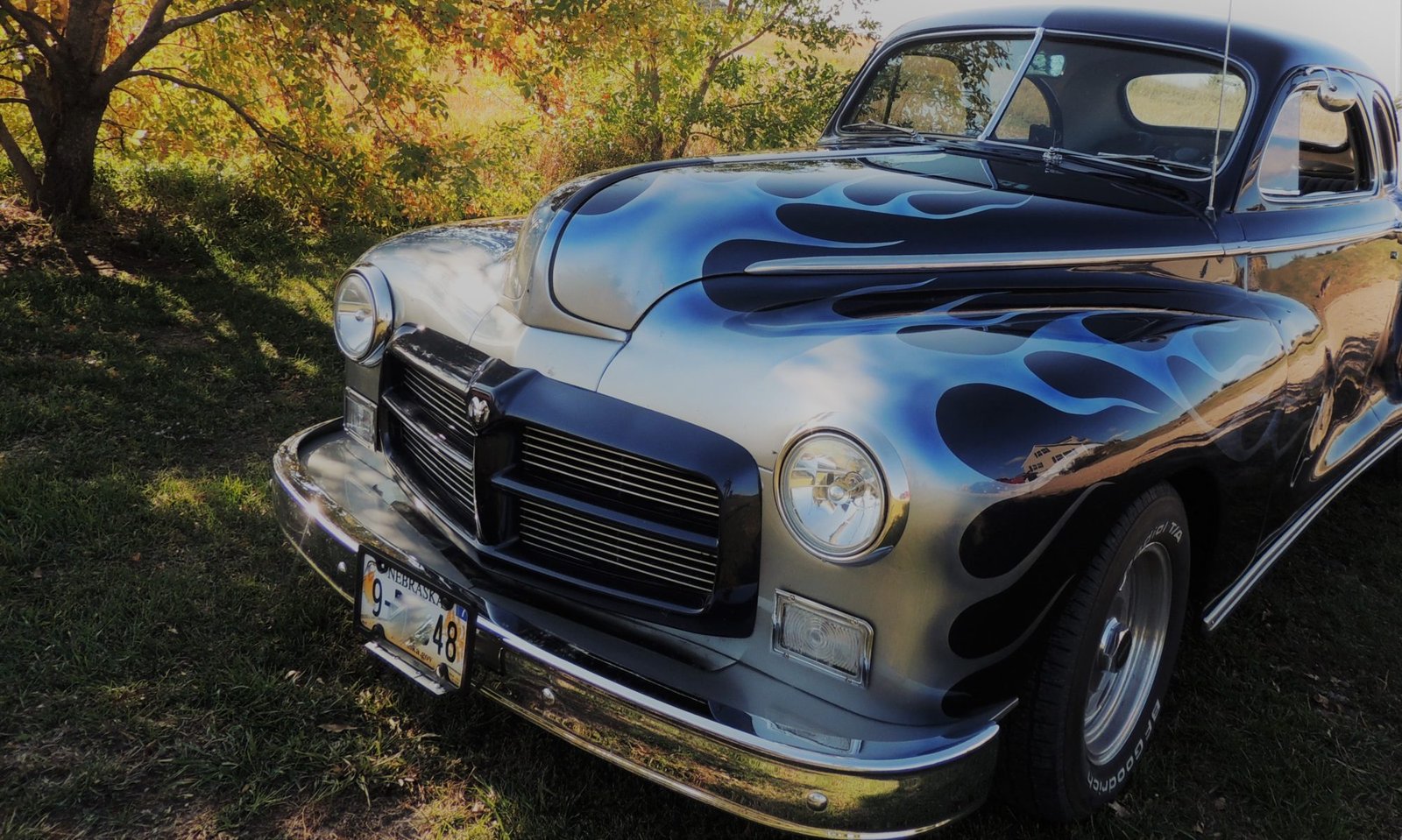What is it about old car dealerships that tug at your heartstrings? When we are road-tripping, I look for these glimpses into the past on the main street of every town we pass through. It is always a pleasant surprise to find such a structure that has been preserved and given new life, and one superb example of such a property is the former Gottberg Auto Company dealership (now Dusters Restaurant & Gottberg Brew Pub) in Columbus, Nebraska.

This structure, built in 1920, features the front ends of four automobiles, made of stone, at three upper corners. Each stone car has a “G” on the grille:

This dealership was built by a man of vision named Max Gottberg. Gottberg had been a farmer since 1881, but a discussion with a local attorney in 1905 changed his career path. Gottberg had purchased his first automobile, a Ford Model A 2-cylinder, a couple of years earlier at the St. Louis World’s Fair. The attorney owned the same type of car, but it had broken down and the attorney had hired a “mechanic” to fix it. The alleged mechanic had fled after strewing pieces and parts of the automobile across the yard, leaving both the attorney and his poor car in a bind. Gottberg, who was in town on jury duty, agreed to attempt to re-assemble the parts. He had the car “running like a top” within a day and a half and soon decided to open his own repair shop.

By 1907, Gottberg was ready to open a Ford dealership in Columbus. The first of any kind established in that city, it was also one of the earlier Ford agencies in the United States. The first few years of business were lean, however. Gottberg once recalled, “The first year I sold 22 cars, and, after all was said and done, I had lost $64.” Livery work helped to keep the doors open until America fell in love with the automobile, and soon Gottberg’s business was thriving.

In 1929, Gottberg established an airfield north of Columbus. An aviation enthusiast, he had purchased an American Eagle biplane. At that time, Ford was manufacturing a $50,000 tri-motor and encouraged Ford dealers to take an interest in aviation with a view toward the production of smaller aircraft.

Gottberg Auto Company celebrated their 25th anniversary in 1932 and was one of the oldest Ford dealerships in the country at that time. It remained in business until Gottberg’s death in 1944.
It makes my heart happy that this uniquely beautiful building has not only been preserved, but is also being honored. Dusters Restaurant (named for the garments worn while driving the earliest automobiles) & Gottberg Brew Pub is a restaurant, banquet facility and micro-brewery featuring lagers, ales, root beer and cream soda. When my family and I stopped there for lunch not long ago , the food was great and the root beer was fantastic. If you are anywhere near Columbus, be sure to take the time to appreciate the building as well as the brews.
Sources:
Advertisment. Gottberg Auto Company. The Columbus Telegram, 30 June 1916, p.
“Auto Repair Shop Opened in 1907.” The Columbus Telegram, 23 May 1956, p. 6.
Dischner, Francis M. “Pioneer Auto Dealer Recalls Early Experiences.” The Columbus Telegram, 6 March 1931, p. 3.
Krepel, Terry. “Discover Columbus History Looking Up.” The Columbus Telegram, 20 December 1987, p. 1.
“Max Gottberg Among Oldest Ford Dealers.” The Columbus Telegram, 31 August 1936, p. 4.
“Second Airfield To Be Established North of Columbus.” The Columbus Telegram, 1 July 1929, 8.
“To Observe 25th Anniversary of Gottberg Agency.” The Columbus Daily Telegram, 22 April 1932, p. 8.






































